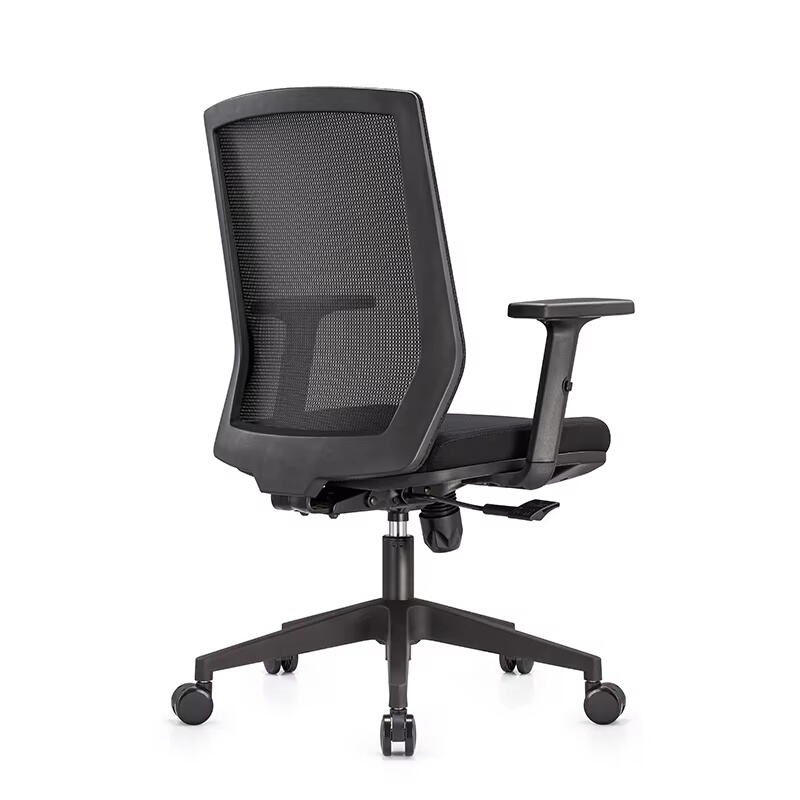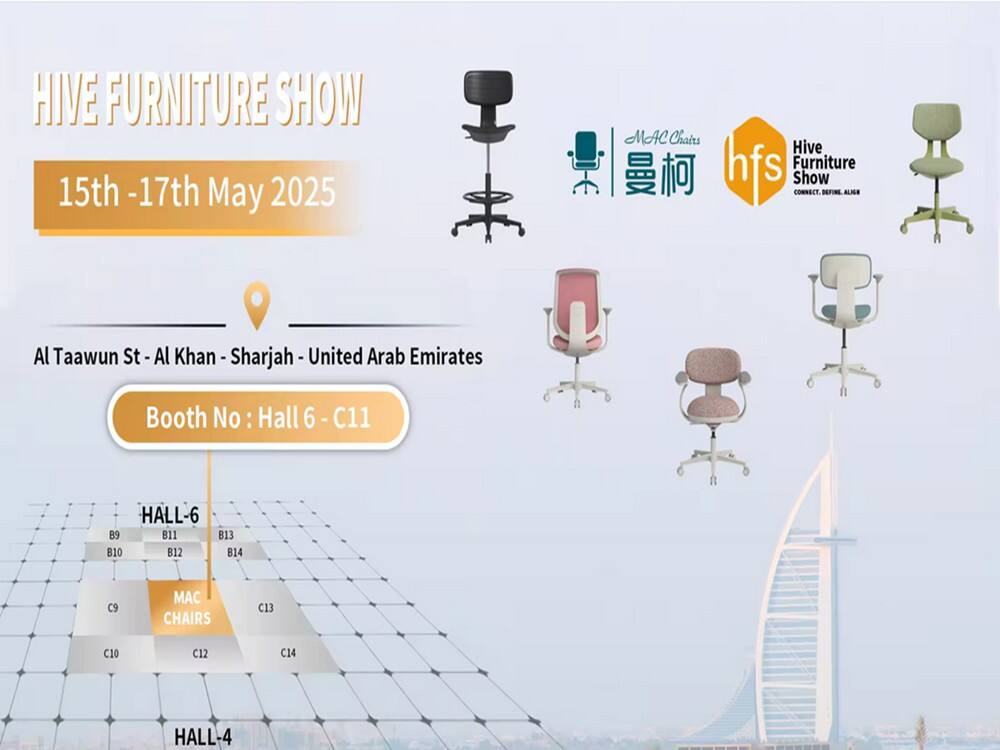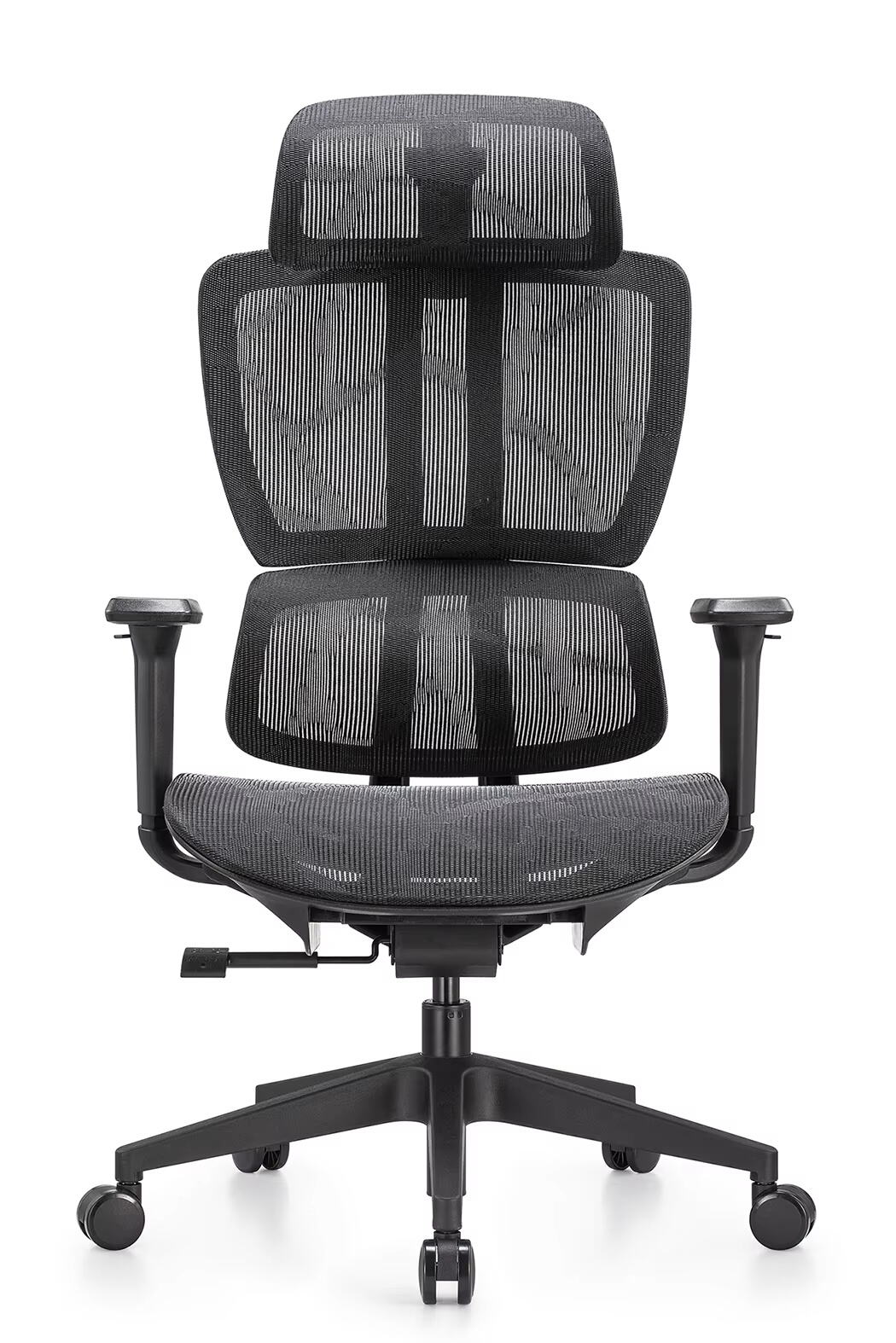
The Science of Breathability in Office Chair Materials
What Makes a Chair Breathable?
When we talk about breathable office chairs, what we really mean is how well the materials let air pass through while keeping sweat at bay, making long days at work much more comfortable. Materials that breathe better help keep things cool by letting air move freely around the body, something that matters a lot when sitting all day causes heat to build up and people start sweating. Not all chair materials are created equal when it comes to breathability either. Some work better than others for sitting through those marathon work sessions. Take mesh chairs for example. Research from the Journal of Ergonomic Design shows they actually let more air flow through compared to leather or plastic options. That explains why many folks find themselves staying cooler in mesh seats even after hours of typing away at their desks.
When it comes to user health, breathability really matters because it stops sweat from building up and keeps the skin feeling good. Without proper airflow, people tend to overheat which leads to all sorts of problems like excessive sweating and sometimes even skin irritation issues. Office chairs that don't let heat escape properly make workers feel tired faster too, which obviously impacts how productive they can be at their jobs. So picking out a chair made from breathable materials isn't just something nice to have it's actually essential if we want to create a workspace where employees stay both comfortable and healthy throughout the day.
How Fabric and Leather Differ in Airflow
When it comes to office chairs, fabric and leather have very different properties when we talk about how they handle airflow and overall comfort. Fabric options like mesh and cotton mixes tend to let air pass through much better than other materials. Take mesh chairs specifically they really excel at keeping things cool because air can move freely around the person sitting there. That kind of ventilation is super important if someone works in a warm climate or finds themselves stuck in an office where the AC isn't doing much good most of the time. People who sweat easily or sit for long periods often find these types of chairs much more comfortable during those summer months.
Leather doesn't let air flow through very well because it's so thick and not porous. Full grain leather feels fancy but can actually get pretty hot and make people sweat when worn for extended periods. Some synthetic alternatives like bonded leather try to mix the look of real leather with better ventilation properties, though they still don't match what fabrics can offer. People who design office spaces usually weigh comfort against practical needs when choosing between these materials for their workplaces. The fabric industry keeps coming out with new stuff that makes materials breathe better while staying strong enough for daily wear, which means we're seeing more comfortable seating options appear in modern work environments.
Fabric Office Chairs: Breathability Benefits Explained
Material Composition and Airflow Efficiency
Fabric office chairs have a real edge when it comes to staying cool while working long hours. Most of them use stuff like polyester, nylon mixes, cotton blends and similar materials known for letting air pass through easily. The way these materials work allows better air movement around the body, so people don't get as hot or sweaty sitting all day. Mesh fabrics stand out particularly because they're made with an open weave pattern. This kind of construction means air can flow freely through the chair, keeping things comfortable even after several hours at the desk. The actual feel and how tightly woven the fabric is makes a big difference too. Smoother surfaces generally let air move more freely than rougher ones, which improves breathability overall. Take the Herman Miller Aeron Chair for instance – many folks swear by this one because of its mesh back and seat design. People who spend most of their time seated often find it stays comfortable much longer than other options on the market.
Ideal for Warm Climates and Long Work Hours
Fabric office chairs work really well in hot climates because they wick away sweat and keep people feeling cool throughout the day. When temperatures rise, sitting becomes uncomfortable for many workers, so having a chair that lets air circulate makes all the difference when it comes to staying productive at work. People who sit for long periods often mention how much better they feel in fabric chairs compared to other types. They tend to sweat less and generally find themselves more comfortable since the material allows proper airflow around the body. Anyone dealing with warm weather should look into getting an office chair made with mesh or breathable fabric covering. The market has some great options available right now. Take the Herman Miller Aeron Chair for instance it's been a favorite among folks living in hotter regions for years now. Another solid choice would be the HON Ignition 2.0 model which also gets good reviews from users about both breathability and how it supports different sitting positions without causing strain.
Leather Office Chairs: Style vs. Ventilation Trade-offs
Why Leather Traps Heat
People love leather office chairs for looking fancy, but they often forget how hot they get after sitting too long. The reason? Leather naturally insulates against temperature changes, making it worse than fabric when it comes to letting air flow through. Fabric chairs have those breathable fibers that let sweat escape, while leather just traps all that body heat right against your backside. Anyone who works in a warm climate or sits in a stuffy office knows what I'm talking about – leather chairs become little ovens after lunchtime. Want to avoid turning into a puddle of sweat? Cooling pads work wonders, or maybe open a window if possible. These simple fixes make a world of difference in keeping comfortable without having to give up on that sleek leather look everyone admires.
When Leather Might Still Work for Your Office
Even though they tend to trap heat, leather office chairs still stay popular across lots of workplaces. Most people find that their good looks and professional vibe beat out any worries about staying cool, especially when meeting clients or sitting at executive desks where making a strong first impression matters so much. Many offices go for leather because it just looks better and lasts longer over time. Some manufacturers have started adding holes to the leather surfaces which helps air move around a bit more without losing that rich, premium feel real leather brings. People who actually sit in them day after day keep coming back with stories about how comfortable and durable these chairs really are despite the warm weather issues. In spaces where looks count, leather chairs bring both class and versatility to different office setups while keeping things comfortable enough for daily use.
Ergonomic Design and Breathability in Different Chair Types
How Breathability Complements Ergonomic Support
The ability of an office chair to breathe properly plays a big role in how ergonomically designed it really is, since this affects comfort levels and ultimately impacts productivity throughout the workday. Ergonomic design basically means getting the chair to fit naturally with how the human body sits and moves, providing support where it matters most according to our physical makeup. Many people don't realize how important breathability actually is when talking about proper support. Research indicates that chairs made with breathable fabrics such as mesh can actually control body temperature better when someone spends long hours seated, stopping that annoying feeling of being sweaty and uncomfortable. Anyone looking to buy an ergonomic chair should definitely look for models that emphasize good airflow. Proper ventilation helps maintain a comfortable body temp while also making it easier to shift positions now and then, which reduces tiredness and keeps workers performing at their best. So when shopping around for that perfect ergonomic seat, remember to check if it offers more than just solid back support – make sure there's enough airflow to keep things cool and pleasant all day long.
Mesh vs. Fabric: Secondary Breathability Options
People love mesh and fabric chairs mainly because they let air flow through, though each type brings something different to the table. Mesh options stand out since the woven design creates plenty of ventilation space, which is great when sitting in hot weather or during those marathon work sessions. Fabric seats tend to be cozier against the skin and strike a nice middle ground between staying comfortable and keeping body temperature stable. Anyone looking at ergonomics should check out chairs with adjustable back supports and parts that move around freely these really make a difference in how comfortable someone feels over time. Most folks who write online reviews mention how mesh chairs keep them cool and comfortable, whereas many still prefer fabric versions for their snug fit and ability to adapt to different settings. We're seeing more manufacturers experiment with combining mesh and fabric in creative ways lately, trying to get the best of both worlds in terms of airflow and proper spine alignment. Office workers shopping for new seating would do well to test out several models made from these materials before making a final decision based on what actually works for their daily routine.
Making the Right Choice: Factors Beyond Breathability
Durability and Maintenance Comparisons
When thinking about how long office chairs last, breathability actually matters quite a bit. Materials that let air through can affect both longevity and what kind of care the chair needs. Take leather chairs for instance. Most people know leather lasts forever if treated right. A simple wipe down with a damp cloth works wonders, and some leather conditioner keeps it from cracking as time goes on. But there's a catch too. Leather gets scratched pretty easily and fades under bright lights, so folks who want to keep theirs looking good need to shield them from harsh conditions. Fabric options tell a different story altogether. Sure, they come in all sorts of colors and designs, but those same fabrics also show signs of aging much faster. Regular vacuum sessions become necessary, along with occasional steam cleaning. Some folks even apply special sprays to protect against spills. Unlike leather which naturally repels dust and allergens, fabric requires constant attention. Many office workers report that properly cared for leather chairs just keep getting better with age, developing that classic patina nobody can resist. Fabrics meanwhile offer something else entirely – the chance to refresh workspace aesthetics without buying brand new furniture every few years.
Cost Considerations for Budget-Conscious Buyers
Thinking about buying a new chair? The material costs really matter when making this decision. Fabric chairs usually come at different price points than leather ones, and let's face it, leather typically costs more money up front. But what people forget is how long these leather seats tend to last. Most folks find that they end up saving cash in the long run because leather doesn't wear out as fast and hardly needs any special care. On the flip side, fabric chairs have their appeal too since they're generally much cheaper. There are plenty of affordable options available without giving up on looks or breathability during those hot summer months. Some interior designers actually recommend splurging on good quality breathable fabrics rather than going for the cheapest option possible, as cheaper materials sometimes trap heat and feel uncomfortable after sitting for extended periods. If money is tight, keep an eye out for seasonal sales or check local furniture stores that offer discounts while still maintaining decent comfort levels and decent design features.
By considering these factors, individuals can make informed decisions, balancing their budgetary constraints with needs for durability and aesthetics. Whether opting for a luxurious leather office chair or a versatile fabric model, assessing both short- and long-term costs is key to achieving satisfactory results.










